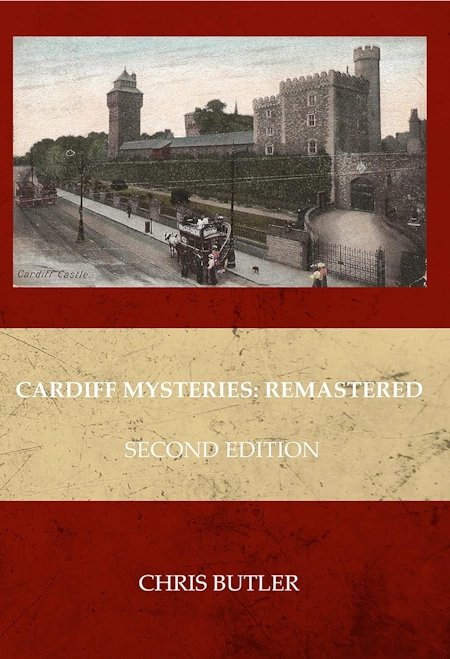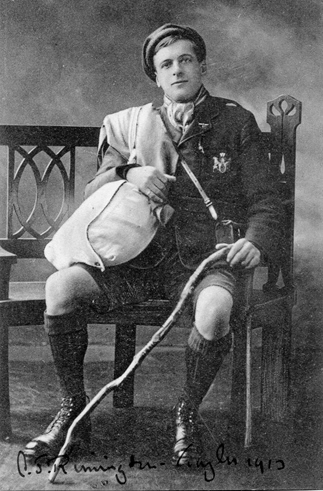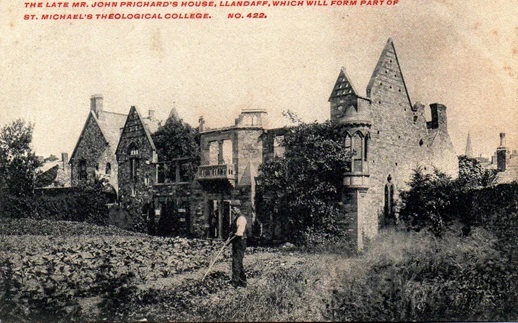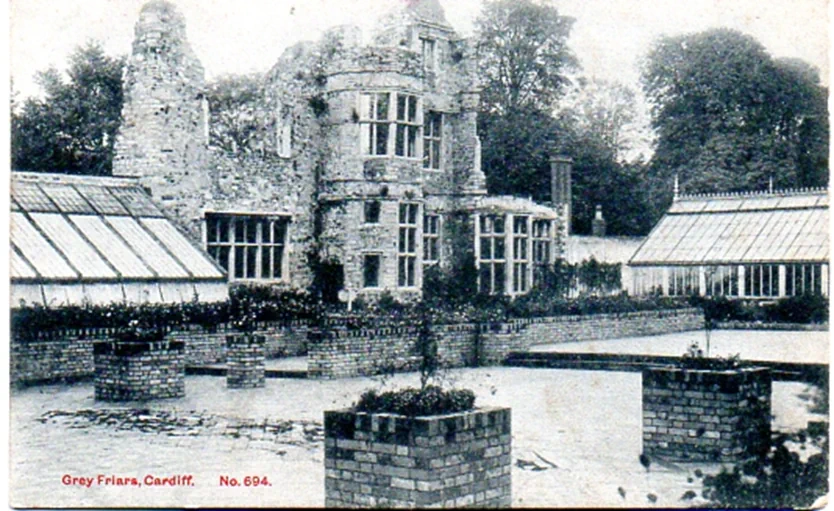
Welcome to Cardiff Mysteries.
Get Chris Butler's book, Cardiff Mysteries: Remastered.
Available exclusively on Amazon
Get Chris Butler's book, Cardiff Mysteries: Remastered.
Available exclusively on AmazonThis interactive website signposts you to “Cardiff Mysteries Remastered” which is published on Amazon. The publication is both a detective mystery and local history of Cardiff.
“Cardiff Mysteries” is a new concept itself in local history writing. Most published postcard or photographic local histories feature short descriptions of the images; either that or the images are used to illustrate what are considered to be the major attractions or features of the localities. Cardiff Mysteries takes a different approach to local history. Each postcard is chosen because it represents something surprising to the modern eye. Follow the intriguing path to solve the puzzles that lie behind the images. This research resembles archaeological test pits into Cardiff’s Edwardian past.
Cardiff Mysteries Remastered is not simply an online book, fascinating in itself, but also a participative project to enlarge our knowledge of the hive of activity that was Edwardian Cardiff – a “Modern Athens” for the then in-crowd.
There are postcards of Cardiff that I would like to buy to add to my collection. These would include:
Why did this Cardiff walker disappear from history?

This postcard is autographed by C. J. Rimington-Taylor and dated 1913. The reverse side reveals the connection with Cardiff. He describes himself as Hon. Scoutmaster, “Lord Mayor’s Own Scouts” Cardiff. He was on a mission to walk round the world – a not uncommon aim in those pedestrian days. He had been wagered $50,000 that he could not walk 50,000 miles. By the time of the printing of this card in January 1913 he had already walked 5,500 miles averaging 33 miles a day. The conditions of the wager were that he should start with no funds and he should not ask for money, food, tobacco or lodging.
He certainly intended to work his passage to the USA. I cannot tell whether he ever made it that far, or whether he won his wager.
This card raises a number of questions. What was he doing in Cardiff? He describes himself as a master mariner so that may be one clue. His father was apparently a solicitor in London, most probably in Kentish Town. What happened to his quest? I suspect the Great War put paid to it. He certainly would not have been able to travel through Germany, Austria and Turkey as he intended. Did he perhaps enlist perhaps, offering his master mariner skills up to his country?
One of the problems in researching this young man is that his surname is unusual. Even on the back of his own postcard he is misspelt as “Rimimgton-Taylor”. There is some suggestion that the hyphenation was optional; and, those people who transcribe Censuses may have used “Rimmington” rather than “Rimington”. This complicates research.
Why was this distinguished Cardiff mansion left unfinished and what became of it?

John Prichard was a skilled Gothic architect who was very much influenced by Augustus Pugin. He became diocesan architect for Llandaff between 1847 and 1886 when he died. He was born in Llangan on 6th May, 1817. He was responsible for much restoration work at Llandaff Cathedral – work which would be largely later undone by Nazi bombing. He was also behind various other Church projects in Glamorgan. He died unmarried and childless and is buried in the grounds of Llandaff Cathedral. Cardiff registers show him resident in Llandaff Road (part of which was later to be renamed Cardiff Road) but no house number is given.
The building was later to become St Michael’s Theological College – a college for training Anglican priests. The building was donated by W. S. De Winton, a director of Lloyd’s bank. Then foundation stone for the College was laid in 1905, and the college opened in 1907. Prichard built his home around 1880 but this postcard must be from around 1903. It appears to show a building both unglazed and unroofed. It also appears to show a gardener making some use of the front garden to grow some vegetables. The value of Prichard’s estate was £1,241 1s 6d. at probate. The probate was proved by Richard Knight Prichard, Marlborough Grange, Cowbridge, and his nephew was his sole executor.
The story goes that Prichard never completed this home. It has even been nicknamed, “Prichard’s Folly”. If this is the case, it must have been left unfinished and derelict between 1880 and 1905 – unfinished for 16 years while he was still alive and earning a living. The rumour is that he lost heart whilst building it because he was jilted by a lady friend. A piece of evidence for this is the addition of a monkey on the east side of the building – he felt she had made a monkey of him. I am not entirely sure I buy all this.
So, we are left with some mysteries. Why did John Prichard stop building his home so close to its completion? Was he jilted by a lady, and what is the story behind that? And, how did the building come into the ownership of W. S De Winton? All suggestions and leads will be gratefully received.
What was behind the Herbert House hooliganism?

Older residents of Cardiff will remember the remains of the Grey Friars Friary and Herbert House in Grey Friars Road. I remember staring at this building whilst waiting at the 28 bus stop on the opposite side of the road. The plucky little tree that sprouted atop the walls always impressed me but the tree is yet to establish itself in this postcard dating from about 1910.
It is hard to believe it now but this important piece of Cardiff’s archaeology, once described as a “light handsome structure in the Tudor style” was demolished in the 1960s to be replaced by a Stalinist brutalist edifice known as the Pearl Building. It is now known as the Capital Tower.
Who was responsible for the sale, and how on earth did this monstrosity get planning permission?
The Franciscans (Grey Friars) established a Friary and church on this site about 1280AD. The friary was dissolved in about 1540 during Henry VIII’s campaign to break away from Rome, and obtain his divorce from Katherine of Aragon. In about 1570, the property was acquired by the Herbert Family who constructed a mansion – Herbert House - using stones taken from the dissolved friary. The Herberts lived there till about 1730, and the building was sold to the Marquis of Bute. Part of the site was used as a nursery for the Castle Gardens – which probably explains the greenhouses shown in the postcard.
We know that archaeological excavations were undertaken by Marquisses of Bute in the 1890s and 1925 and this site will seek to research what the results of those excavations were. Does anyone have access to C. H. Fowler’s “Excavations on the site of the Grey Friars monastery, Cardiff” (1896)? Does any archaeologist wish to attest to the loss to history (or otherwise) as a result of this fateful planning decision?
Wikipedia reports that Llewelyn Bren, a Welsh nobleman of royal lineage and insurgent against harsh local rule, was hanged, drawn and quartered by the Despensers without a proper trail. His body parts were exhibited around the county but afterwards were buried at the Grey Friars. Although skeletons were found in the excavations their identification proved unsatisfactory. We also wonder what consideration was taken of the archaeological value of the site by the City Council before the pile-drivers were let loose, and any remaining bones lost. Research will be needed in council records to expose the arguments and personalities behind this decision. We hope to name the guilty parties behind the Herbert House hooliganism but we need your help.
You may own some old postcards of Cardiff which you feel pose some questions worth researching and solving. If so, please scan them and send them to me with the puzzles they seem to set. Also, if you can add any interesting material to the mysteries I have solved or partly solved I would love to hear from you.

“Cardiff Mysteries” was originally published in paperback in 1996, and attempted to solve a variety puzzles provoked by Edwardian postcards of Cardiff. There was a print run of 2,000. They sold out, and the book is now out of print. The chapter headings of the mysteries were:
The book has been rewritten, bringing items up to date, corrected where necessary, adding in extra pertinent illustrations, postcards colourised where possible. In addition, new chapters have been added with mysteries to be solved:
"I hope that this new, more voluminous, more colourful edition of Cardiff Mysteries: Remastered shines a light on the secrets of this great city." - CHRIS.

Chris was born in Cardiff in 1950. He attended Cardiff High School for Boys and later took a degree in Archaeology & Anthropology in Cambridge.
He was a Special Adviser to the Secretary of State for Wales in the early 80s. In 1987, he became the Conservative MP for Warrington South but suffered a brush with democracy in 1992.
He ran his own Public Affairs company till 2015. Latterly in 2019, he had a further brush with democracy when he stood for the Brexit Party in Cardiff North.
His fascination with Edwardian postcards of Cardiff led him to get his works published on Amazon: “Cardiff Mysteries Remastered” now in its Second Edition; and, “Cardiff’s Ship of Shame”, a true history play revolving around the Dickensian cruelty inflicted on young lads being exploited in a grim hulk of a ship beached in an unhealthy inlet of the River Taff in the 19th Century.